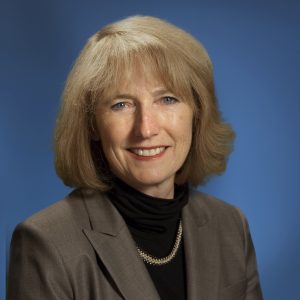Vivian Forssman is Director, Centre for Teaching and Educational Technologies at Royal Roads University. She shares her insights about the CTET and how her team is helping to shape the social and experiential learning of the university.

1. Can you give us a snapshot of the Centre?
Our goal in the Centre for Teaching and Educational Technologies (CTET) is to empower and enable faculty to design and facilitate great learning experiences in this blended environment. Since my arrival at Royal Roads University (RRU) a year ago, the CTET team has accomplished an impressive list of both creative and structural deliverables. This includes refining an enterprise-wide course production process; implementing a collaborative working environment for learning designers and technologists; upgrading our Moodle learning management system to a more current version; and introducing STUDIO, a drop-in collaboration space for faculty.
CTET has three teams with about 25 staff. The Teaching and Learning Team is focused on learning design, course development, workshops for faculty and STUDIO Support; the Learning Technologies Team does quality control and production for all courses, and guides the evolution and support for LMS and other technologies; the Media Support Team is all about video production and AV support. CTET is in a constant state of evolution, responding to emergent institutional requirements.
2. What is your role?
I currently lead CTET at Royal Roads University, with the mandate to design and support technology-enabled teaching and learning for this almost-online university. RRU offers short-term residential courses in each program, as a means of providing a solid social learning foundation prior to students “going the distance.” It is a unique kind of place with an iconic castle next to the Salish Sea. The senior administrators all have their offices in the castle, which reminds me that educational institutions are still about bricks-and-mortar, even as many of us strive for designing more virtual worlds of social-and-experiential learning.
3. What are you working on right now? And how does this align with your thinking?
My goal for Year 2 is to implement improved governance structures to foster better institutional understanding and funding mechanisms for “intentional” design and development of awesome courses. I believe this is a competitive necessity, but it will require evidence and persuasion to bring others into an understanding around this opportunity and issue.
My values are aligned with critical thinking and problem-solving pedagogies that invite discourse and develop skills in consideration of “global futures challenges.” This translates into design that incorporates social learning activities and tools, and fosters community building through the application of social media. My mantra is that the integration of technologies and tools for communications, collaboration, and media construction creates new knowledge.
4. How did you become an educational technologist?
I have worked at the intersection of teaching, learning and technology within the education sector for 20 years. Prior my ed-sector career, I worked in the tech-sector for large multinational firms. My MBA thesis in wine packaging and marketing prepared me for anything and everything.
In the mid-90’s, as the Internet became reality, I was so enthusiastic about the possibilities that I started my own company, Knowledge Architecture Inc., focused on curriculum and services for technology-enabling learning in high schools. I had no background in educational anything at that time, except that my kids were in elementary school and I was on several parent committees about technology-in-schools. But I had plenty of passion and energy; this 4-year venture became an audacious social entrepreneurship idea that inspired the community, and then flopped. But it gave me thick skin, an academic grounding in curriculum and learning, and a continuing passion for transforming education.
Prior to my current role at RRU, I have been on career journeys throughout this sector, leading similar departments at other post-secondary institutions. All of the units have been involved with learning design, web and information technologies, and program development related to assisting faculty with skills development for these new models of educational delivery. Previous gigs include UBC Sauder School of Business, SAIT Polytechnic and BCIT.
5. Why is this work important to you?
Working in the ecosystem of learning science and cognition, information technologies, the mobilization of knowledge through this thing called curriculum, the measurement of learning, the design of social engagement, and managing change in universities – it is all interesting and important work!
Some folks have the privilege of examining this world through a research lens. I live it, leading this knowledge-work in an operational context, in Centres (for teaching, curriculum development, educational technology), which are at the center of this ecosystem. The people I am surrounded by – students and faculty – are smart and interesting and motivated to make positive contributions in the world. The teams I lead are people who bring interdisciplinary creativity to solving problems and they all enjoy testing new ways-of-doing with technology.
Notable Quotes:
[RRU] is a unique kind of place with an iconic castle next to the Salish Sea. The senior administrators all have their offices in the castle, which reminds me that educational institutions are still about bricks-and-mortar, even as many of us strive for designing more virtual worlds of social-and-experiential learning.
My goal for Year 2 is to implement improved governance structures to foster better institutional understanding and funding mechanisms for “intentional” design and development of awesome courses.
My values are aligned with critical thinking and problem-solving pedagogies that invite discourse and develop skills in consideration of “global futures challenges.” This translates into design that incorporates social learning activities and tools, and fosters community building through the application of social media.
Working in the ecosystem of learning science and cognition, information technologies, the mobilization of knowledge through this thing called curriculum, the measurement of learning, the design of social engagement, and managing change in universities – it is all interesting and important work!
